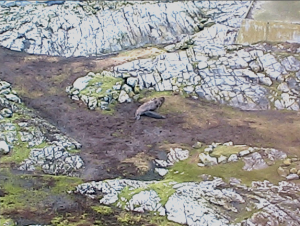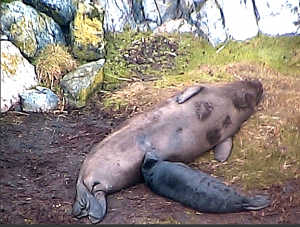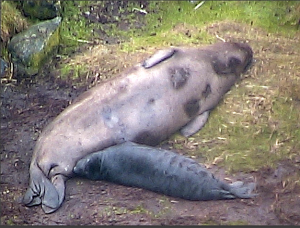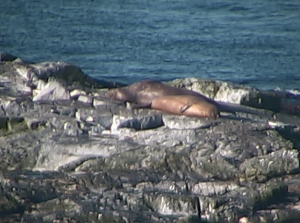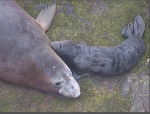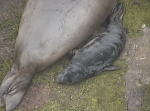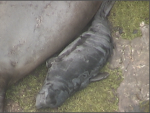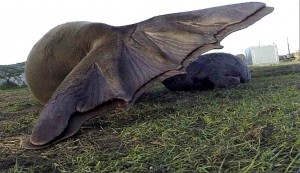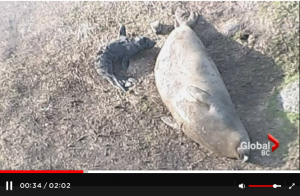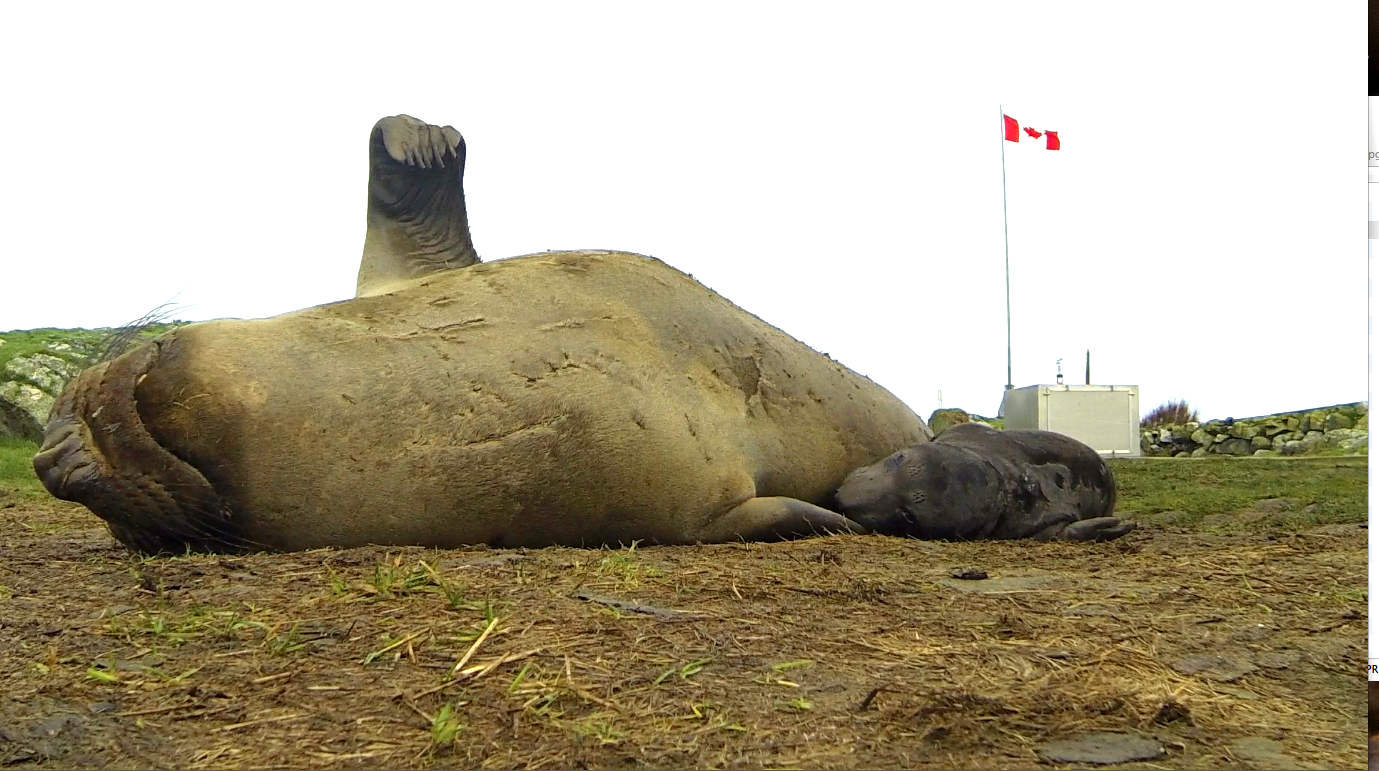
A goodbye wave?? Female elephant seal and pup born at Race Rocks , January 14, 2014 : Alex Fletcher photo
British Columbians can take great satisfaction in the fact that an Elephant seal colony is being slowly established in British Columbia, and we can see an elephant seal pup being nursed via a webcam on an island within site of Victoria. The reality is that the risks these animals face in the Strait of Juan de Fuca if they are to maintain a population increase are now becoming even more challenging.
Currently about 6,000 large commercial vessels transit Canadian and U.S. waters toward Vancouver or Washington ports each year. Each month about five large oil tankers ply the waters down the international border within a few kilometres of the Race Rocks Ecological Reserve.
Under the Kinder Morgan Pipeline Proposal, up to 34 tankers a month would be loaded with oil at a terminal outside Vancouver, then travel through Haro Strait and the Strait of Juan de Fuca for export to markets in Asia and the U.S. These are tankers in excess of 200 metres in length.
The $5.4 billion expansion project would nearly triple pipeline capacity from about 300,000 to 890,000 barrels of crude oil a day to meet customer demand. Much of that future cargo will likely be diluted bitumen from Canada’s tar sands. If approved, the expansion is expected to be operational in late 2017. The pipeline is operated by Kinder Morgan Canada and owned by Houston-based Kinder Morgan Energy Partners LP.
The potential of collision and oil spills is unparalleled, and you can’t’ clean oil off a two ton marine mammal very easily let alone the volumes of marine life it consumes daily for survival. It would be a miracle indeed if we still have elephant seals at Race Rocks in 2020, the 40th anniversary of the Ecological Reserve.
G.Fletcher
Link to other posts on the Race Rocks website about the Risks we face with Increased Tanker Traffic
References we could all consider seriously:
- Financial Liability for Kinder Morgan – Georgia Strait Alliance,
“Residents of the Salish Sea region—Vancouver, Victoria, the Gulf Islands and Washington State—could see a four-fold increase in the number of oil tankers traveling from the Port of Metro Vancouver through Juan de Fuca Strait, if Kinder Morgan is permitted to build a new pipeline to carry oil from the tar sands to markets in Asia. Such a dramatic increase signals exponentially higher risk of oil spills and raises many questions about what is at risk, how the oil is “cleaned up”, and who pays for oil spill response. “
- The Deepwater Horizon Oil Spill and Marine Mammals by the marine mammal Commission, an independent commission of the US government
- Effects of Oil Spills on Marine and Coastal Wildlife—“Oil spills can impact wildlife directly through three primary pathways: —ingestion – when animals swallow oil particles directly or consume prey items that have been exposed to oil .—–absorption – when animals come into direct contact with oil inhalation – when animals breathe volatile organics released from oil or from “dispersants” applied by response teams in an effort to increase the rate of degradation of the oil in seawater. ——inhalation – when animals breathe volatile organics released from oil or from “dispersants” applied by response teams in an effort to increase the rate of degradation of the oil in seawater”
- Effects of Oil Pollution on Marine WIldlife ” Seals are very vulnerable to oil pollution because they spend much of their time on or near the surface of the water. They need to surface to breathe, and regularly haul out onto beaches. During the course of an oil pollution incident, they are at risk both when surfacing and when hauling out.”
- Marine mammals and the Exxon Valdez Auteur : LOUGHLIN Thomas R. “This recently published book is a unique longitudinal study of the demise of an ecosystem due to a single acute environmental perturbation.”
